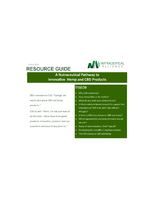Linear Amplifier utilizes current feedback architecture.
Press Release Summary:
Able to deliver bandwidth of 850 MHz at gain of +2 V/V and slew rate of 2,900 V/µsec, dual-channel OPA2695 provides fast signal conditioning with linearity to minimize distortion for optimal signal fidelity and filtering. Single or dual supply voltage options and gain capability give engineers flexibility to adjust parameters to address specific application needs, while current-feedback architecture with optimized differential pin-out facilitates PCB layout efforts.
Original Press Release:
TI Introduces Industry's Highest Linearity Amplifier for Differential Signals
Current feedback architecture delivers larger gains at wide bandwidths to maximize design flexibility
DALLAS, June 10 -- Texas Instruments Incorporated (TI) (NYSE:TXN) introduced today a dual-channel, high-speed current feedback amplifier. The device features 70 percent greater bandwidth gain at +2 V/V than competitive devices, providing fast signal conditioning with the highest linearity to minimize distortion for better signal fidelity and easier filtering. The amplifier offers wide supply voltage options and large gain capability, giving engineers the flexibility to adjust the parameters to address the specific need, such as high gain for differential signals or high output voltage or current for low power consumption. In addition, the device's optimized symmetrical package eases layout for cost-effective precision IF amplifiers, high-speed arbitrary waveform output drivers, wideband analog-to-digital converter (ADC) drivers and active filters. (For more information see http://www.ti.com/opa2695-pr.)
Current feedback architecture optimizes bandwidth and slew rate and minimizes distortion
Unlike traditional voltage feedback or fully differential amplifiers, the OPA2695 offers a new level of performance for high-speed applications. Due to its current feedback architecture, the OPA2695 can deliver a high bandwidth of 850 MHz at a gain of +2 V/V and a fast slew rate of 2900 V/us to process high-speed signals.
The architecture also provides wider bandwidth capability at much higher gains than can be achieved with a voltage feedback architecture. In contrast, fully differential amplifiers, which are popular for differential signal paths and are based on a voltage feedback architecture, suffer from reduced bandwidths at larger gains.
The OPA2695 combines the current-feedback architecture with an optimized differential pin-out, which provides superior gain and bandwidth, maintains high linearity with low harmonic distortion levels, and eases the design process. The pin-out gives super-symmetrical signal paths with input and output pins on opposite sides of the chip to greatly simplify PC board layout.
Furthermore, the optimized pin-out enables superior even-order harmonic distortion, which cannot be achieved by other current feedback devices with traditional pin-out configurations. The OPA2695 provides second-order harmonics (HD2) of 94 dBc and third-order harmonics (HD3) of 93.5 dBc at 10 MHz for differential signals, and HD2 of better than 90 dBc up to 55 MHz at a large gain of +10 V/V, which reduces in-band harmonic distortion while easing the filtering of out-of-band even order harmonics.
Supply voltage options increase design flexibility
In addition, designers have the flexibility to provide a single supply voltage (3.5 V to 12 V) or a dual supply voltage (+/-1.75 V to +/-6 V) to the OPA2695 to suit their requirements. For example, with a supply voltage of +/-5 V and gain of +8 V/V, the OPA2695 can deliver a large output voltage swing of +/-4.1 V or 8.2 Vpp with a 120 mA sourcing or sinking output drive current into an ADC for accurate digitization.
Alternatively, at a lower single supply voltage of +5 V, the device can save power while still delivering +/- 90 mA output current with a 3.4 Vpp for power-sensitive applications, such as handheld portable devices. To further reduce power consumption, a power down option is also available, which reduces the quiescent current consumption to 80 uA.
The OPA2695 extends TI's high-speed, current feedback amplifier portfolio, which offers the industry's widest bandwidth. The offering includes the following:
Supply Supply Quiescent Current
Slew Rate Bandwidth Voltage Voltage Current Output(typ)
# of Ch (V/us) (MHz) (min)(V) (max)(V) (typ)(mA) (mA)
OPA695,
OPA2695, 2900(2)
OPA3695 1,2,3 4300(1,3) 1700 +/-1.75 +/-6 12.9 +/- 120
OPA694,
OPA2694 1,2 1700 1500 +/-3.5 +/-6.3 5.8 +/- 80
THS3201,
THS3202 1,2 5200 1800 +/-3 +/-7.5 14 +/- 100
For more information and to download the latest Amplifier and Data Converter Selection Guide, please see http://www.ti.com/amplifier
Availability, pricing and support
The OPA2695 is available today in a SO-8 and QFN-16 package. Suggested resale pricing is $2.10 in quantities of 1,000. Samples and evaluation modules of the OPA2695, single-channel OPA695 and triple-channel OPA3695 are available from http://www.ti.com/opa2695
About Texas Instruments
Texas Instruments (NYSE:TXN) helps customers solve problems and develop new electronics that make the world smarter, healthier, safer, greener and more fun. A global semiconductor company, TI innovates through manufacturing, design and sales operations in more than 25 countries. For more information, go to http://www.ti.com/
Please refer all reader inquiries to:
Texas Instruments Incorporated
Semiconductor Group, SC-08077
Literature Response Center
14950 FAA Blvd.
Fort Worth, TX 76155
1-800-477-8924
Trademarks
All registered trademarks and other trademarks are the property of their respective owners.




